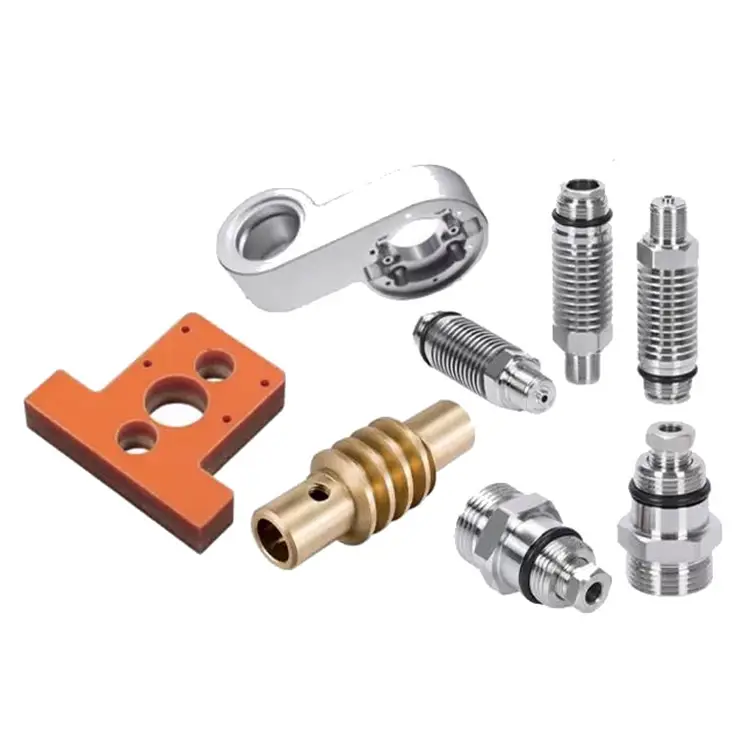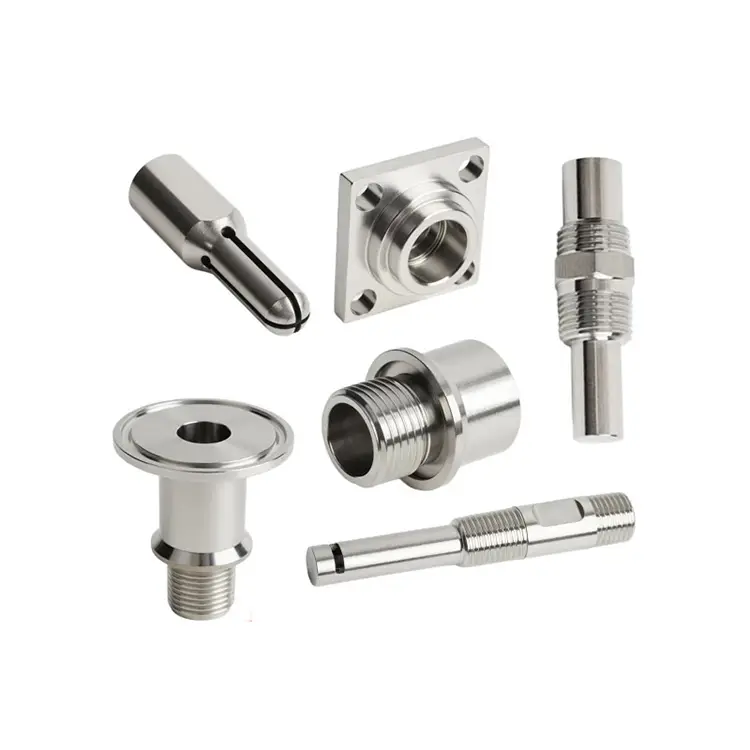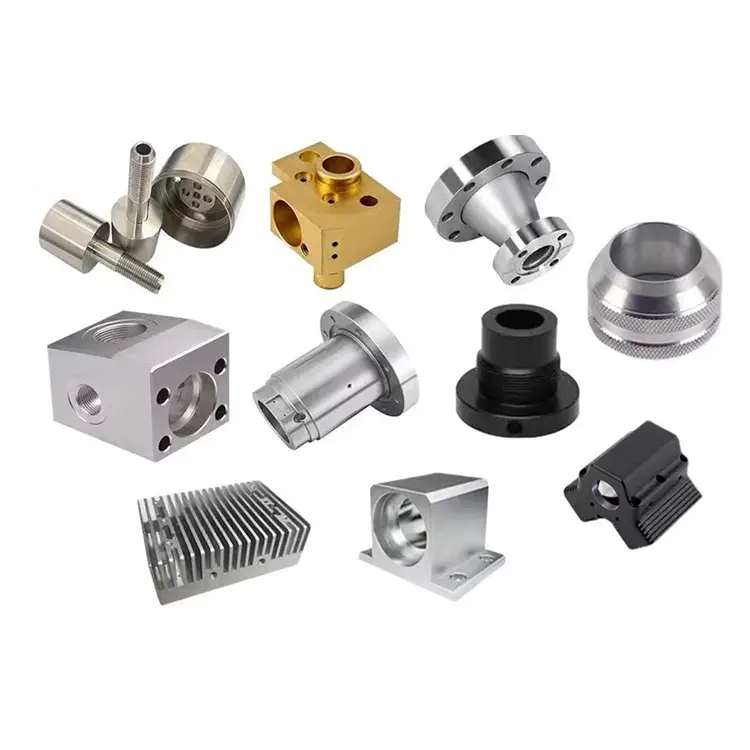CNC vändande delar
You are welcomed to come to our factory to buy the latest selling, low price, and high-quality CNC Turning Parts, Notin looks forward to cooperating with you.
Overview of CNC turning Processing
CNC turning processing is a machining method that uses a computer program to control the movement of the lathe toolholder along the workpiece's contour, precisely cutting and processing the workpiece. Compared to traditional machine tools, CNC turning processing offers significant advantages, including high precision, high efficiency, low failure rate, and a high degree of automation. It is widely used in high-precision applications such as model manufacturing, aerospace, and satellite manufacturing.
What are the characteristics of CNC turning parts?
High-Precision Processing
CNC turnings offer extremely high machining accuracy, meeting the machining needs of a wide range of precision parts. Through precise CNC programming, CNC turnings can achieve micron-level machining accuracy, ensuring part quality and performance. This high-precision machining feature makes CNC turning parts widely used in high-precision applications such as aerospace, automotive manufacturing, and electronics.
High-Efficiency Production
CNC turning parts utilize automated processing methods, significantly improving production efficiency. Compared to traditional lathes, CNC turnings reduce manual intervention and achieve continuous, rapid processing. Furthermore, CNC turnings can perform multiple processing steps in a centralized manner, further shortening production cycles and improving production efficiency.
High Flexibility
CNC turning offer tremendous flexibility, adapting to machining parts of varying shapes, sizes, and materials. By changing tools and adjusting machining parameters, CNC turnings can easily handle a wide range of complex parts. This flexibility gives CNC turning parts a significant advantage in responding to market changes and customer demands.
High Degree of Automation
CNC turnings utilize computer control systems, enabling highly automated machining processes. Operators simply program the machining program, and the CNC turning automatically completes the machining task. This high degree of automation not only reduces operational complexity but also minimizes machining errors caused by human error.
In short, CNC turning parts occupy a vital position in modern manufacturing due to their high precision, high efficiency, flexibility, and automation. With the continuous advancement of technology and evolving market demands, CNC turning parts will continue to leverage their advantages and contribute to the development of the manufacturing industry.
What types of parts are suitable for machining on CNC turnings?
CNC turning are highly efficient and energy-efficient CNC machine tools widely used in the machinery manufacturing industry. They are suitable for machining the following types of parts:
1. Shafts: CNC turning are capable of machining small-diameter, high-precision shafts and various custom-shaped surfaces.
2. Gears: CNC turning can machine a variety of gears and their associated transmission components. The lathe's various toolholder systems and cutting tools enable the machining of a wide variety of tooth shapes.
3. Threads: CNC turning can efficiently machine a variety of threads, including metric, imperial, special, and left-hand threads.
4. Custom-shaped surfaces: CNC turning can machine a variety of irregularly shaped surfaces, such as various tooth shapes, curved surfaces, chamfers, grooves, and convex and concave surfaces.
CNC turning Process
1. CNC Programming: Import the CAD file into CAM software and create the CNC program.
2. Workpiece Clamping: Clamp the workpiece to be machined onto the CNC turning.
3. Machine Tool Adjustment: Adjust the position and speed of each axis of the CNC turning according to the machining program requirements.
4. Automatic Machining: Start the CNC machining program, and the CNC turning automatically completes the workpiece according to the program requirements.
5. Finishing and Measurement: After machining is completed, the workpiece surface is trimmed, deburred, and the finished dimensions are measured.
What materials can CNC turning process?
1. Steel Turning: CNC turning is suitable for machining various steels, such as carbon steel, alloy steel, and stainless steel. Carbon steel machining is the most common, typically using techniques such as high-speed cutting and chemical cutting.
2. Copper Turning: brass machining typically uses cutting and milling techniques. Due to its excellent thermal and electrical conductivity, brass is suitable for manufacturing high-precision electronic components.
3. Aluminum Turning: Aluminum alloys are lightweight, corrosion-resistant, and high-strength, making them widely used in industries such as aviation and automotive. CNC turning is suitable for machining various aluminum alloys.
4. Stainless steel turning parts: Stainless steel has the advantages of high specific strength, high specific stiffness and high temperature strength, and is widely used in aerospace, shipbuilding and other fields. CNC turning is suitable for processing various Stainless steel materials.
- View as
CNC bearbetningstjänst
Nuote Metals ligger i Dongguan China, vi erbjuder CNC-bearbetningstjänst här i mer än tio år, oavsett bransch eller applikation, strävar vi efter att leverera högkvalitativa resultat som uppfyller och överträffar våra kunders förväntningar. Introduktion av CNC-bearbetningstjänst CNC -bearbetningstjänst spelar en viktig roll inom industrin inom medicinskt område, produktion av anpassade implantat och kirurgiska instrument kräver extrem precision, ett område där CNC -bearbetningstjänst utmärker sig. Vår tillverkningsprocess säkerställer att dessa medicinska apparater uppfyller de rigorösa standarderna för den medicinska industrin. Produktparameter (specifikation)
Läs merSkicka förfråganCNC bearbetade delar
CNC -bearbetade delar som produceras av nuotmetaller i Kina är en integrerad komponent i en mängd applikationer inom olika branscher på grund av deras höga precision, pålitliga prestanda och anpassningsbara karaktär. Vi erbjuder olika typer av materialbearbetning, såsom stål, mässing, aluminium, rostfritt stål, koppar etc.
Läs merSkicka förfråganCNC vände delar
Nuote-metaller tillverkar CNC vände delar för en bred mängd industrier-från mycket reglerade industrier som förlitar sig på Nuote för konsekventa, krävande delar till de som kräver distinkt, framstående produktidentifiering. Alla de vända delarna är höga i precision och trevliga med ytbehandling.
Läs merSkicka förfråganCNC bearbetningsdelar
CNC -bearbetningsdelar tillverkade av Nuote -metaller har hög dimensionell noggrannhet och snäva toleranser. Materialet kan vara kolstål, mässing, koppar, aluminium, rostfritt stål etc. Prover kan vara redo på cirka 7-10 dagar.
Läs merSkicka förfråganKopparvridande delar
Nuote Metals har mer än tio års erfarenhet av tillverkning och leverans av specialiserade vändkomponenter, och vår CNC -lath -utrustning kan producera kopparvriddelar till extremt exakta mätningar för att uppfylla dina mest detaljerade krav. Alla kopparbearbetningsdelar tillverkas till de minsta toleranserna och uppfyller även de tätaste kriterierna.
Läs merSkicka förfråganAluminiumvridande delar
Nuote -metaller producerar och levererar en mängd anpassade CNC -aluminiumvridande delar i Kina och erbjuder aluminiumbearbetningstjänster. Vi har avancerade CNC Turn & Mill-maskiner för att tillhandahålla enstoppbearbetningslösningar.
Läs merSkicka förfråganMain points and precautions for processing different materials
Main points for steel turning:
(1) When performing high-speed cutting, the cutting depth should not be too large to prevent the cutting edge from overheating and becoming brittle and damaged;
(2) Pay attention to cooling and spray water or oil on the cutting area in time;
(3) Pay attention to selecting the appropriate tool type and cutting parameters.

Main points for brass turning:
(1) The processing speed should not be too fast to prevent thermal deformation of the material;
(2) Select appropriate cutting fluid and tool;
(3) Pay attention to tool wear and damage to the cutting edge.

Main points for aluminum turning:
(1) Use cutting fluid to reduce chips;
(2) Select appropriate cutting parameters;
(3) Pay attention to avoiding heating in the cutting area and preventing the cutting edge from deteriorating.

Key points of Stainless steel turning:
(1) Stainless steel has a high plastic deformation capacity. During processing, it is important to control the processing volume to avoid excessive deformation;
(2) Select appropriate cutting parameters and cutting fluids;
(3) Pay attention to tool wear and damage.
What are the advantages of CNC turning processing?
1. High precision: CNC turnings can achieve high-precision processing, and their accuracy can reach below 0.01mm.
2. High efficiency: CNC turnings have fast processing speeds and can continuously process multiple workpieces, which improves production efficiency.
3. High degree of automation: CNC turnings are controlled by computer programs, with a high degree of automation, which reduces the difficulty of manual operation.
4. Stable workpiece quality: CNC turnings have stable processing and high precision, which effectively guarantees the quality of workpieces.
What fields are CNC turning parts mainly used in?
CNC turnings are widely used in high-precision fields such as model manufacturing, aerospace, and satellite manufacturing. At the same time, they are gradually entering large-scale production fields such as automobiles, machinery, and chemicals. CNC turning processing has become an essential tool for modern high-precision, high-efficiency manufacturing.
Conclusion
This concludes our introduction to CNC turning processing. With the continuous advancement of technology, CNC turning processing will be applied in more fields, ushering in even broader development prospects.














